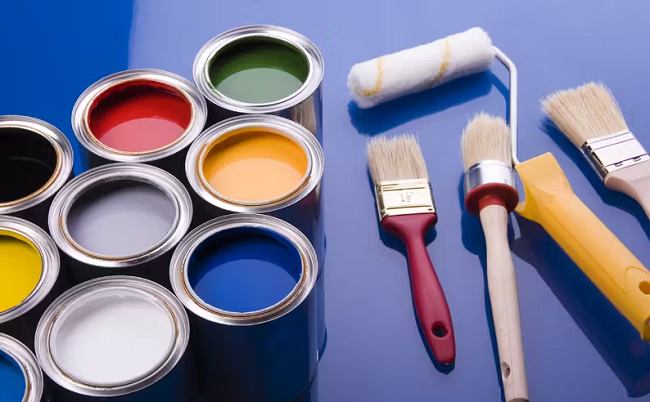Painting is a fundamental aspect of maintaining and beautifying a home, but not all painting projects are the same. Interior vs Exterior Painting presents a variety of differences that affect everything from paint selection to application methods. Understanding these differences can help homeowners and professionals choose the right products and techniques for long-lasting and visually pleasing results.
Key Differences in Interior vs Exterior Painting
Exterior painting significantly differs from interior painting in terms of its functional purpose, required resilience, and specialized application techniques. Interior painting improves the visual appeal of indoor spaces while offering protection against everyday wear and tear. In contrast, exterior painting safeguards buildings from environmental elements like sunlight, rain, snow, and pollution while improving curb appeal.
Interior painting typically focuses on making living spaces more attractive and comfortable. The finish must be smooth, washable, and safe for indoor air quality. On the other hand, exterior painting emphasizes longevity, with a strong need for weather resistance and surface protection What’s the Top Difference Between Interior vs Exterior Painting
Choosing the Right Paint for Interior vs Exterior Painting
Selecting the appropriate paint is crucial in Interior vs Exterior Painting. Interior paints are formulated to minimize odor, allow effortless cleaning, and enhance the aesthetic appeal of indoor spaces. These paints are available in various finishes such as matte, eggshell, satin, and gloss, each suited for different room types and functions.
These paints often contain additives that help prevent mildew growth, fading, and cracking. They may have higher VOCs compared to interior paints, although low-VOC options are becoming more popular. The choice of paint must consider sunlight exposure, humidity, and the surface material.
Paint Composition in Interior vs Exterior Painting
Interior paints are made with fewer chemicals and focus on smooth application and safety. They contain fewer toxic substances and are often low or zero-VOC. They also include binders that allow the paint to adhere well to drywall or plaster surfaces.
Exterior paints are designed to be more flexible and resilient, enabling them to endure harsh outdoor conditions. They are capable of expanding and contracting with temperature fluctuations, which helps prevent cracking over time. They also contain UV blockers and fungicides to combat outdoor conditions.
VOC Levels in Interior vs Exterior Painting
Volatile Organic Compounds (VOCs) can negatively affect indoor air quality and pose health risks. Interior paints usually have low VOC levels to minimize indoor air pollution.Exterior paints, which are exposed to the elements, may contain higher levels of VOCs to improve their performance and longevity.
Tools and Techniques Used in Interior vs Exterior Painting
Interior vs Exterior Painting requires different sets of tools and approaches. Interior painting is generally more detail-focused, involving smaller brushes, rollers, painter’s tape, and drop cloths. Precision is key when painting around trim, ceilings, and corners.
Exterior painting is more labor-intensive and equipment-heavy. Painters may need ladders, scaffolding, pressure washers, paint sprayers, and extension poles. Since exterior painting often involves large surfaces like siding and brick walls, speed and weather-awareness are vital.
Safety Measures in Interior vs Exterior Painting
Interior painting poses fewer physical risks but still requires proper ventilation and protection from fumes. Wearing masks, gloves, and goggles is recommended, especially in poorly ventilated areas.
Exterior painting carries more physical risk due to working at heights and dealing with unpredictable weather. Safety equipment such as harnesses, helmets, and non-slip shoes is necessary. It’s also important to be mindful of electrical lines, uneven terrain, and wind conditions.
Surface Preparation in Interior vs. Exterior Painting
Surface prep is a crucial step in both Interior vs Exterior Painting. Indoor surfaces are typically easier to prepare—requiring patching holes, sanding, and cleaning.
Exterior surfaces demand more thorough preparation. These surfaces are often dirty, weathered, or peeling. Power washing, scraping old paint, filling gaps with caulk, sealing cracks, and priming are standard procedures before applying paint outdoors.
Temperature and Humidity Effects on Interior vs Exterior Painting
Interior painting benefits from a controlled environment. Proper temperature and humidity levels allow for even drying and smooth finishes.
Exterior painting must be scheduled based on the weather. High Excess humidity can significantly delay paint drying, while colder temperatures can interfere with how well the paint bonds to the surface. A sudden rainstorm can ruin freshly applied exterior paint.
Cost Comparison: Interior vs Exterior Painting
Cost is another area where Interior vs Exterior Painting differs. Interior painting is typically less expensive. The job requires fewer materials, and labor costs are lower since there are fewer hazards and less preparation needed.
To ensure a smooth and even finish, walls are typically primed before the final topcoat is applied.
Common Mistakes in Interior vs Exterior Painting Projects
There are several common pitfalls in Interior vs Exterior Painting. For interior jobs, mistakes often include skipping surface preparation, using the wrong paint finish, or poor ventilation during application.
In exterior projects, errors such as painting in bad weather, ignoring surface damage, or choosing inferior paint can lead to rapid deterioration. Another frequent mistake is not allowing adequate drying time between coats, especially when humidity is high.
Preventing these issues requires thorough planning, the right materials, and attention to detail. Reading paint labels, following manufacturer instructions, and possibly hiring professionals can ensure a successful and long-lasting finish.
By understanding the critical differences between Interior vs With exterior painting, homeowners can make well-informed choices that guarantee long-lasting durability, enhanced aesthetics, and increased property value. Whether you’re refreshing a bedroom or revamping your home’s exterior, tailoring your approach to the environment and surface conditions is key to a professional result Interior Vs Exterior Painting.
For Expert Advise click here to Get in touch with us

Why It Matters
- Longevity
Exterior paint failures (peeling, chalking) can lead to water intrusion and structural damage if the wrong product is used. Interior paints used outside won’t flex or block moisture. - Health & Environment
Interior paints are designed to keep your indoor air clean, reducing headaches and long-term health risks. Exterior paints balance performance with environmental regulations, but still often emit more VOCs. - Aesthetics & Feel
A softer, richer finish inside invites comfort, while a tougher finish outside presents a crisp, protective shell against the elements. - Cost-Effectiveness
Choosing the right paint for its intended use saves money on premature repainting, repairs, and health-related costs down the line.

